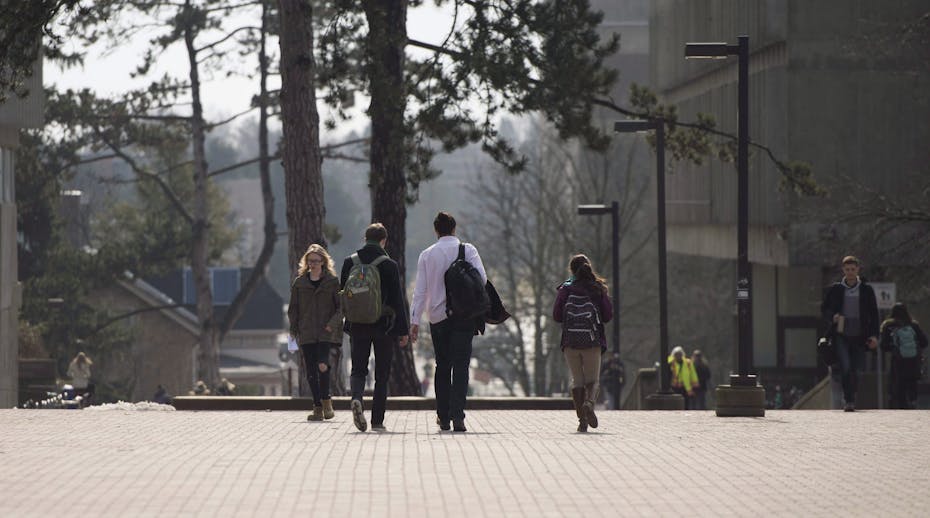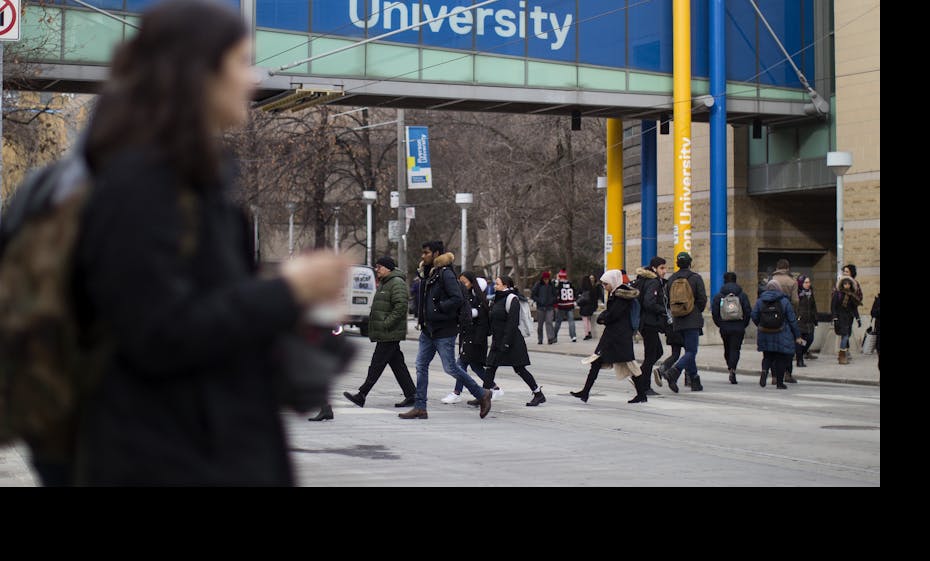
THE CANADIAN PRESS/Hannah Yoon
The Ontario government’s so-called Student Choice Initiative was recently declared unlawful following a court challenge launched by the Canadian Federation of Students and the York Federation of Students.
The Ontario Divisional Court’s decision voids the government’s requirement that post-secondary institutions must distinguish between fees that are considered compulsory and those deemed non-essential. The directive also allowed more students to opt out of paying fees to student associations through a so-called opt-out window, which some students took advantage of.
Campus organizations, including student unions, newspapers and radio stations, food banks and LGBTQ support centres, received less funding this year due to students opting out. Some organizations were forced to lay off staff or cut services.
The court’s decision reaffirms the autonomy of universities to manage their own relationships with their student organizations.
The message delivered was clear. Governments cannot interfere with post-secondary student associations that belong to and are solely funded by students.
News of the decision was celebrated by student associations, but on campuses across Ontario, they’re still anxiously awaiting the government’s next move.
Three arguments
The legal challenge advanced by the Canadian Federation of Students is based on three arguments. First, the government acted outside of the laws that govern colleges and universities. Second, its policy directives were made to serve an improper purpose and in bad faith. Third, the government breached a duty of procedural fairness by failing to consult with student associations prior to issuing the policy. The court only needed to address the first argument since it raised legality directly.
According to the court, the government acted unlawfully. The court’s reasoning stemmed from the fact that there was no statutory authority that allowed cabinet or the education minister to interfere in the internal affairs of student associations.
The court also rejected the government’s position that the matters brought forward weren’t issues that the court or a judge could appropriately resolve. The government argued, unsuccessfully, that those issues are “core policy decisions based on social, economic and political considerations, and are exercises of the Crown prerogative power over public spending.”
Though it’s true that one of the two major sources of income for Ontario universities are government grants, accounting for roughly a third of their overall operating revenue, the court reminded the province that “universities are private, autonomous, self-governing institutions … publicly assisted but not publicly owned or operated.” Therefore, they aren’t subject to interference without proper legislation.
Nonetheless, there are two sides to this story.
Another side to the story
On the one hand, the court’s decision strengthens the autonomy and independence of post-secondary institutions and student associations. On the other, the court provides a possible road map for the government to lawfully implement its policy initiative directed at students. That’s because the crux of the court’s decision is that the policy is inconsistent with current legislation governing universities.
While the government has yet to respond to the court’s decision, there are three possible ways it can proceed.
First, the government could appeal the initial decision to a higher court and seek to uphold the original policy directives.
Second, the government might attempt to make the policy directives lawful by bringing in new legislation.
The third option would be for the government to do nothing and concede defeat.
But no matter what approach the government takes, all three options will have some implications for universities and student organizations.
Either one of the first two approaches would have an impact on how student organizations collect fees that are essential to how they operate. The challenge that student organizations face in the event of an appeal is losing potential revenue if students can continue to opt out of paying some fees until the final outcome of an ongoing legal battle.
Waiting game
In the event the government takes the legislative route, the fate of the Student Choice Initiative will be in the hands of the provincial government. Student organizations would also be faced with a waiting game.
If the government decides to concede defeat, student organizations might go back to business as usual. But with revenue lost for some due to the policy directive being in place for the fall semester, the question becomes: Who will pay for the lost revenue associated with the initiative?

THE CANADIAN PRESS/Chris Young
Conceding defeat would therefore raise issues around whether the government will replenish the lost revenue as a result of allowing students to opt out.
Though the third option might be the most desired response for student organizations, it may also be one that results in future legal battles between the Ontario government and the students who took advantage of the opt-out process if they are in any way financially affected by reversing the policy.
Appealing the decision might prove futile for the government since, as this case demonstrates, judges could be sensitive to university self-government and view student organizations more favourably than legislators.
Even though student associations have been described as “crazy Marxist nonsense” by Premier Doug Ford, the court has recognized the important role of student associations within universities and society.
Not exactly more affordable
The Student Choice Initiative was framed as part of the government’s plan to make post-secondary education more affordable and accessible to students. Yet as the first semester of this academic school year comes to a close, the situation on campuses seems to suggest otherwise.
The optional fees mandated by cabinet in fact amount to less than one per cent of a full-time student’s overall tuition and ancillary fees.
As the court noted in its decision:
“Total tuition and university and student ancillary fees are $8,687.30; the student association fees — the only fees deemed by cabinet to be non-essential — are $60.60 of this total.”
Rather than making education more affordable and accessible, the government’s policy directive forced student organizations into a corner.
Student associations at Queen’s University and the University of Toronto, among others, have struggled to distinguish between ancillary and optional fees in hopes of saving services like food banks, school newspapers, legal clinics and campus radio stations.
While the court’s decision is a positive step in the right direction for student organizations, the Student Choice Initiative will nonetheless have a longer lasting impact on campuses.
For now, the survival of student organizations, and the services they provide, depends on whether the government finds a way to lawfully implement the Student Choice Initiative — whether that means through the courts or the legislature.
![]()
David Said, PhD Candidate/Researcher, Political Science, University of Guelph
This article is republished from The Conversation under a Creative Commons license. Read the original article.








